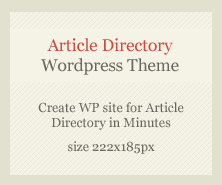across conferences, exhibitions, academic papers, and books. It refers to the evolving relationship between humans and artificial intelligence in the realm of creative work, including art, music, design, writing, and innovation. Below is a comprehensive breakdown of this theme, covering the context, significance, applications, ethical issues, and future trends. For more information please visit Generative AI
🧠 Overview
“Human + AI: Redefining Creativity in the Age of Machines” explores how artificial intelligence is transforming the definition, process, and ownership of creativity. Rather than replacing human creators, AI is increasingly becoming a collaborator or co-creator, amplifying human imagination and enabling new forms of expression.
🎨 Key Areas of Creative Collaboration
1. Visual Arts
- AI-generated art: Tools like DALL·E, Midjourney, and RunwayML generate images from text prompts.
- Human-in-the-loop: Artists guide AI outputs through curation, iteration, and prompt engineering.
- Applications: Digital painting, generative design, animation, NFTs.
2. Music Composition
- AI composers: Tools like AIVA, Amper Music, and Google’s Magenta can create music in various styles.
- Collaboration: Musicians use AI for inspiration, background scores, or remixes.
- New forms: AI-generated music without human intervention, challenging traditional authorship.
3. Writing & Storytelling
- Generative text models: GPT-4, Claude, and others assist in writing poetry, screenplays, novels, and journalism.
- Co-writing: Authors use AI for plot suggestions, language refinement, or overcoming writer’s block.
4. Design & Architecture
- Parametric and generative design: AI models architectural solutions based on parameters and aesthetic goals.
- Rapid prototyping: Designers iterate faster using AI-aided visualization and suggestion tools.
5. Game Development & Interactive Media
- Procedural content generation: AI designs levels, characters, and stories dynamically.
- NPC behavior: AI improves realism and adaptability in non-player characters.
🔍 How AI Enhances Creativity
| Human Capability | AI Contribution |
|---|---|
| Imagination | Suggests variations, visualizes concepts |
| Skill | Executes at scale or in unfamiliar styles |
| Efficiency | Automates routine tasks |
| Exploration | Generates unexpected or novel ideas |
| Emotion | Analyzes and enhances emotional tone |
⚖️ Ethical & Philosophical Questions
- What is authorship? If AI contributes significantly, who owns the work?
- Bias and fairness: AI models may reflect cultural or social biases in generated outputs.
- Originality: AI can replicate existing styles—where’s the line between inspiration and plagiarism?
- Job displacement vs augmentation: Does AI replace artists or empower them?
🧩 Real-World Applications
- Advertising: Campaigns generated by AI and refined by human teams.
- Film & Media: Scriptwriting, editing, and even acting (via deepfakes or voice AI).
- Education: AI-assisted creativity tools in classrooms, empowering students.
- Accessibility: Generating art or stories for individuals with disabilities.
🚀 Future Trends
- AI as a Creative Partner, not Tool: Deeper integration into collaborative platforms (e.g., Adobe Firefly, Figma AI).
- Real-time Human-AI Interaction: Live co-creation with responsive, conversational AI.
- Cultural Co-Creation: AI trained on specific cultural data sets to enhance diversity.
- Embodied AI Creativity: Robots creating physical artworks or performances.
- Democratization of Creativity: Non-creatives gain expressive power through intuitive AI tools.
📚 Further Reading / Watching
- Books:
- The Creativity Code by Marcus du Sautoy
- New Laws of Robotics by Frank Pasquale
- Documentaries/Shorts:
- The Machine That Feels (MIT)
- AI and the Future of Creativity (YouTube Originals)
- Exhibitions:
- MoMA’s “AI + Art” exhibitions
- Barbican’s “AI: More than Human”
🗣️ Conclusion
“Human + AI: Redefining Creativity in the Age of Machines” is not about one replacing the other—it’s about new forms of collaboration, challenging traditional notions of creativity, authorship, and even beauty. The fusion of human intuition with machine computation creates possibilities previously unimaginable.
